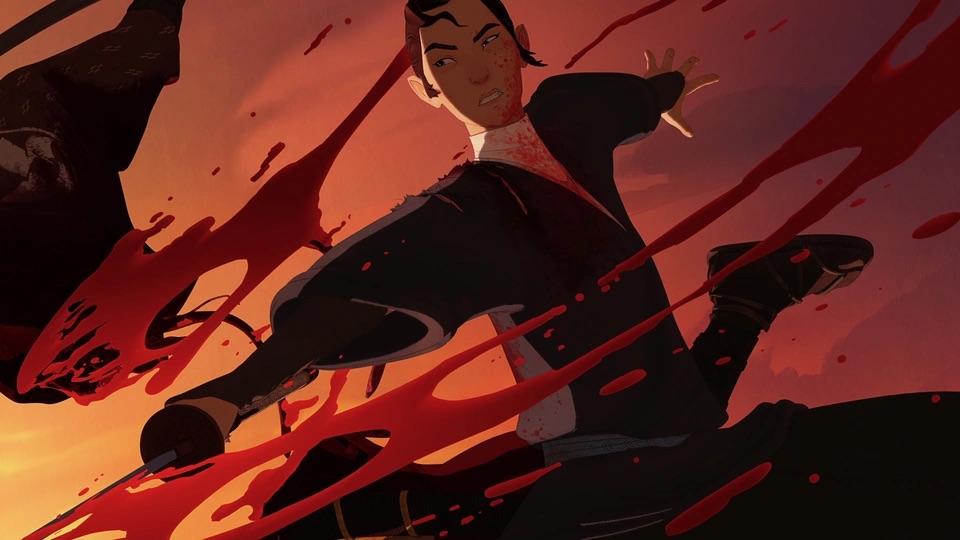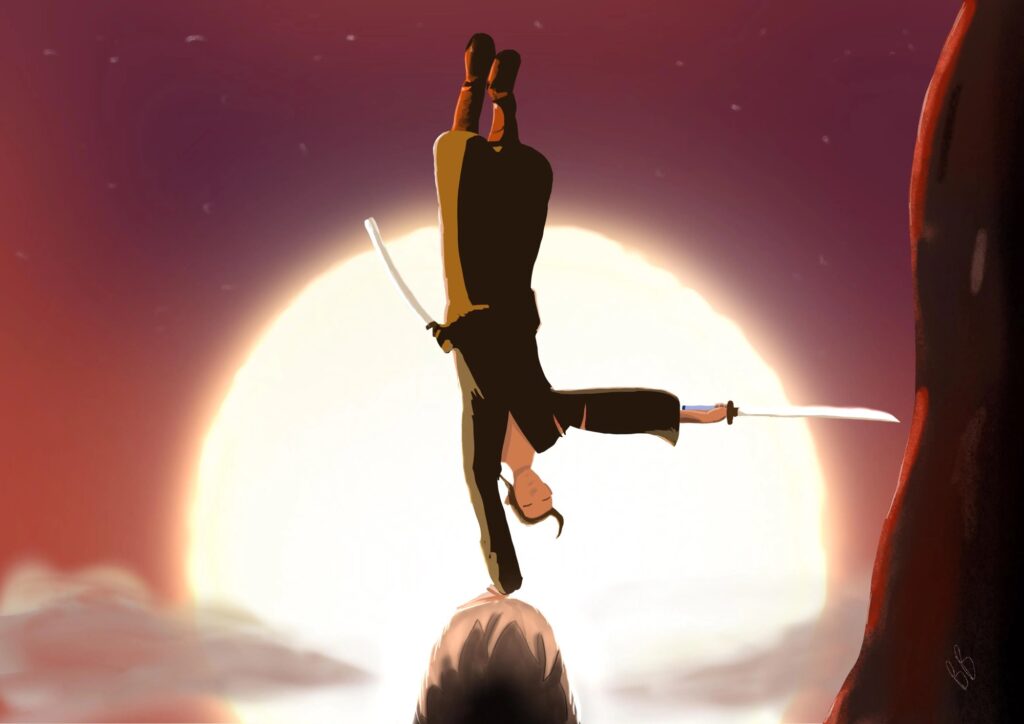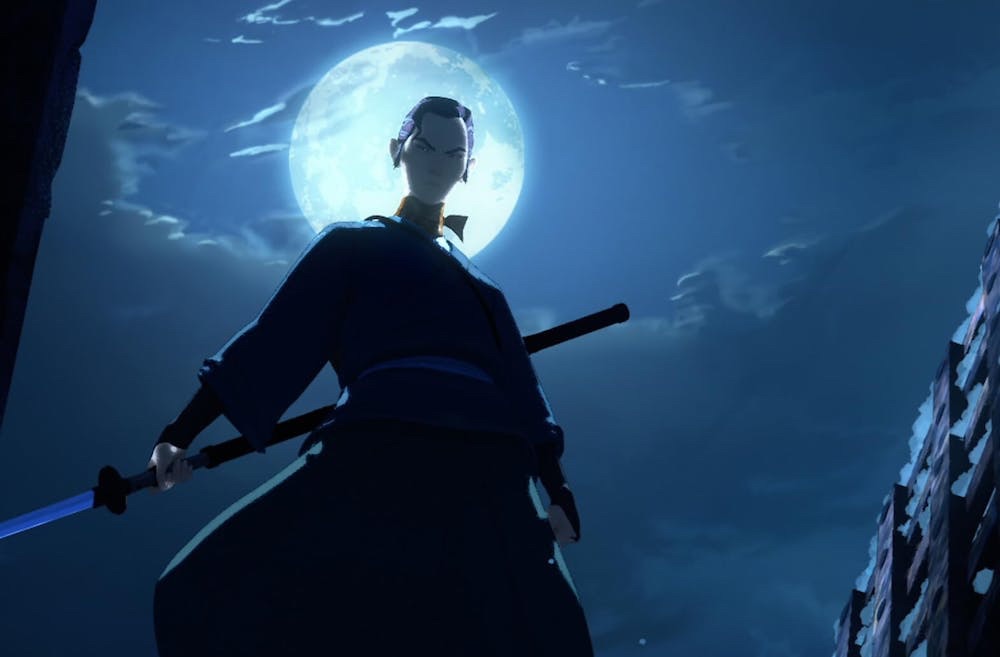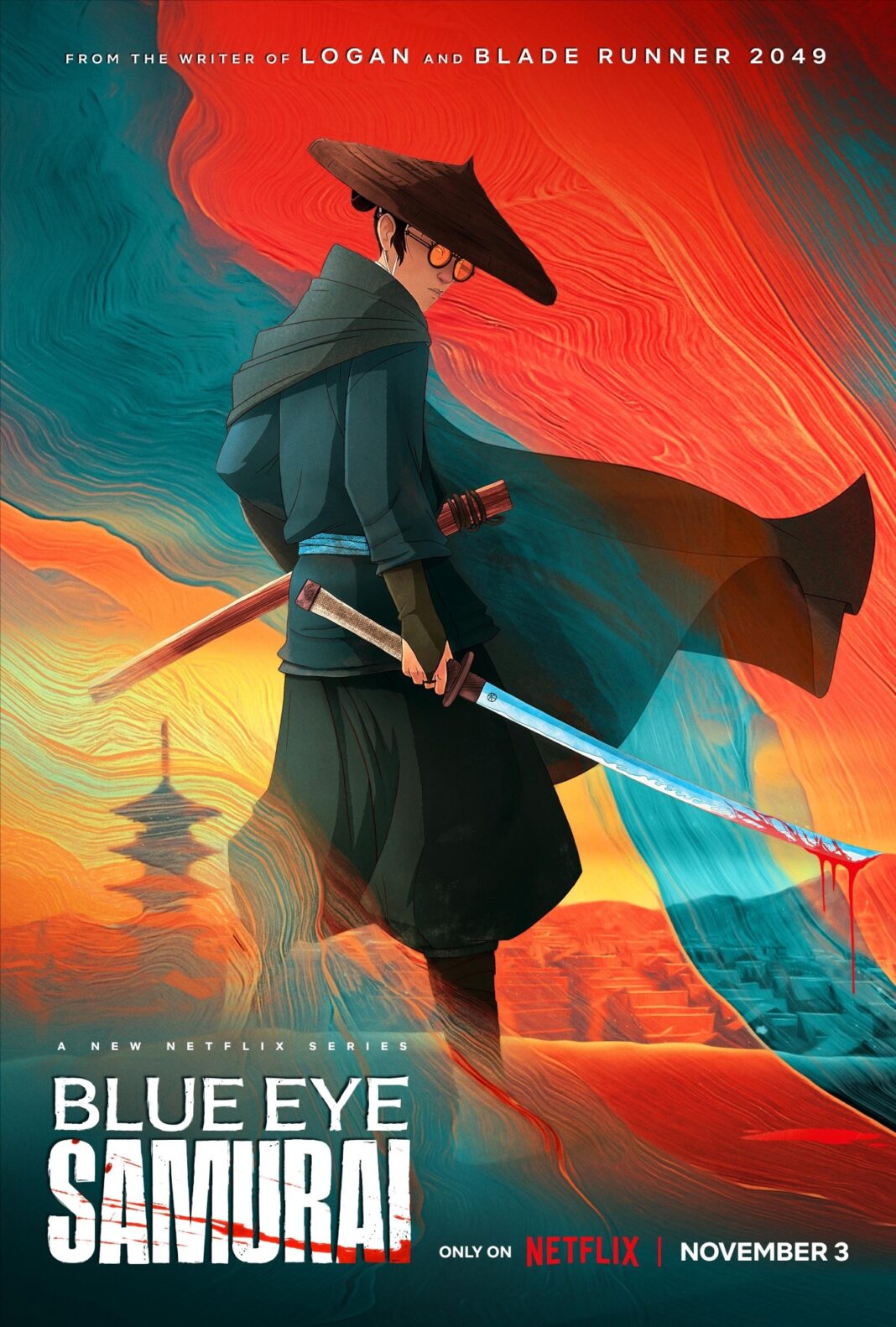Netflix’s Blue Eye Samurai is a masterful fusion of Japanese history, pop culture, and thrilling animation. Written by Michael Green and Amber Noizumi, the series introduces Mizu, the “Blue Eye Samurai,” an outcast in Edo-period Japan who’s on a quest for vengeance. Mizu’s blue eyes mark her as a mixed-race warrior, both feared and shunned in her world. Concealing her identity with tinted glasses and a Ronin hat, she’s as skilled in battle as she is determined.

Set in a flourishing 17th-century Japan that isolates itself from Western influence, the series pits Mizu against four European men—those responsible for the pain tied to her mixed heritage. Voiced by Maya Erskine, Mizu slices through Japan’s elite fighters, embodying a brutal yet compelling figure, reminiscent of the iconic antiheroes of Clint Eastwood and Quentin Tarantino films.
Over eight 45-minute episodes, perspectives shift among Mizu, Princess Akemi, her reflective counterpart, and Abijah Fowler, the colonizer antagonist. Episode five, “The Tale of the Ronin and the Bride,” offers emotional depth, bringing a Tarantino-esque edge with a showdown that recalls Kill Bill’s frenetic battles. The show intertwines Japanese myths like the Onryo—a spirit of vengeance—with Mizu’s own wrath, adding supernatural allure.

Blue Eye Samurai is visually stunning, blending 2D and 3D animation, and even live-action choreography for a cinematic feel. Director Jane Wu’s choice to integrate live-action-inspired movement heightens the immersive quality, from sprawling Edo landscapes to the intensity in Mizu’s expressions.
Though revenge plots are familiar, Blue Eye Samurai breathes new life into the theme by exploring identity, race, gender, and societal rejection. These elements give the series a contemporary relevance while rooting it deeply in Japan’s past. With a second season confirmed, Blue Eye Samurai stands as a vivid showcase of storytelling excellence—each episode as sharp and purposeful as Mizu’s katana.

In addition to Blue Eye Samurai, Netflix offers Warrior, a live-action series inspired by Bruce Lee’s writings. Set in late 19th-century San Francisco, it follows Ah Sahm, a Chinese martial arts prodigy who becomes entangled in Chinatown’s violent Tong Wars. The series delves into themes of immigration, cultural identity, and racial tension, paralleling the exploration of identity and societal challenges found in Blue Eye Samurai. Both series provide compelling narratives that blend historical context with intense action, offering viewers a rich exploration of cultural and personal conflicts.







